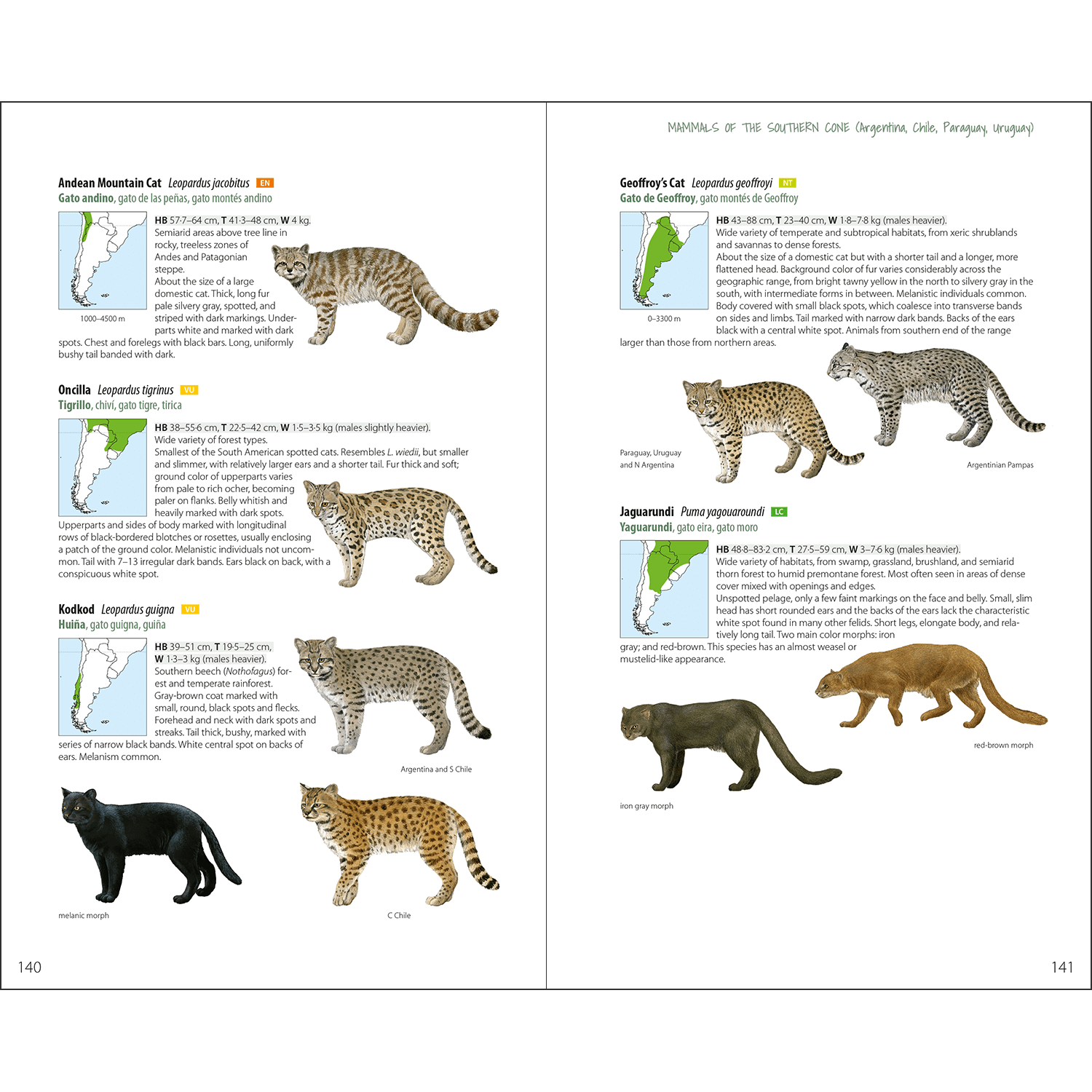| Serie | Lynx Illustrated Checklists |
| Auteur | Gecompileerd door Albert Martínez Vilalta |
| ISBN | 9788416728268 |
| Uitgever | Lynx Edicions |
| Taal | Engels |
| Pagina’s | 160 |
| Formaat | 14 × 22.8 cm |
| Bindwijze | Paperback |
| Afbeeldingen | Illustraties en verspreidingskaarten |
| Jaar van uitgave | 2020 |
This illustrated checklist covers The Southern Cone of South America and its associated islands (Argentinian and Chilean Austral Zone islands, Falklands (Malvinas), Desventuradas Islands and Juan Fernández Archipelago), a region rich in habitat diversity and harboring a corresponding richness of mammalian life. Although not a traditional Field Guide, this book will equip both residents and visitors to the region with an easy-to-use resource to quickly learn all the species of mammals known to occupy the area.
It covers 486 species of mammals, including 17 introduced species with established wild populations (American Beaver, American Mink, Blackbuck, Black-capped Squirrel Monkey, Brown Rat, Chital, Common Fallow Deer, Common Muskrat, Eurasian Wild Pig, European Hare, European Rabbit, House Mouse, Mouflon, Pacific Rat, Pallas’s Squirrel, Roof Rat, and Western Red Deer) and three domesticated ones (Alpaca, Llama, and Water Buffalo). Every species is illustrated, and each is accompanied with a distribution map showing where it occurs in the area. With respect to the domesticated species, Alpaca and Llama have full treatment because of their regional importance, while the Water Buffalo has been included because there are also feral populations that are hunted.
The Southern Cone land area (including south-eastern Brazil) represents 26% of the total land area of South America. It includes a wide array of habitats between the semiarid lowlands of the Chaco and the tropical rainforests of the Atlantic Forest region in the north to the Patagonian cold steppes in the south; and from the deserts, Chilean matorral, and Valdivian forests of the Pacific coast in the west to the Pampas grasslands in the east, including much of the Andes and their characteristic habitats.
This area harbors an important biodiversity of flora and fauna and includes numerous endemic species and even endemic families such as Microbiotheriidae (Monito del Monte) and Pontoporiidae (Franciscana). It also includes some of the best areas for observing mammals in the whole of South America, such as the Iguazú National Park, the Iberá Nature Reserve and the Peninsula Valdés World Heritage Site in Argentina; the Lauca, Chiloé, and Torres del Paine national parks in Chile; and the Mbaracayú Biosphere Reserve and Defensores del Chaco National Park in Paraguay.
Features:
- 486 species, including 17 introduced.
- Texts for each species include common names in English and Spanish, conservation status according to The IUCN Red List of Threatened Species, and the most relevant details about habitats occupied and descriptive notes to facilitate identification.
- Widely used common names in Argentina, Chile, Paraguay, and Uruguay are also included.
- Every species account includes also one or more illustrations and a distribution map.

































